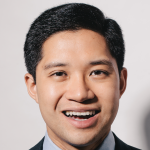(Via Getty Images.)
“Uneasy lies the head that wears a crown,” in the famous words of Shakespeare. Applied to the world of law firms, it could be translated as follows: “It’s not easy being a managing partner.”
Managing partners have a lot on their minds these days. And last Thursday, at a lively panel at the annual meeting of the New York State Bar Association (NYSBA), five law firm leaders let us into their world.
Skillfully moderated by my colleague Craig Brown, Managing Principal of Bridgeline Solutions (Lateral Link’s temporary staffing arm), the panel featured Daniel Connolly, Managing Partner of the New York office of Bracewell; Louis DiLorenzo, Managing Member of the New York office of Bond, Schoeneck & King; Ronald Shechtman, Managing Partner of Pryor Cashman; Marc Landis, Managing Partner of Phillips Nizer; and Richard Scarola, Managing Member of Scarola Zubatov Schaffzin. The featured firms run the gamut in terms of size from Bracewell, a Biglaw firm with 400 or so lawyers; Pryor Cashman, a midsize firm with just under 200 attorneys; and Scarola Zubatov Schaffzin, a boutique with a dozen lawyers.
What did the panelists discuss? Here are some highlights (with thanks to Jack Newsham of Law.com for his excellent write-up).
1. Managing millennials.
Like it or not, in less than a decade, millennials will make up about 75 percent of law firm staff. So managing partners need to know how to manage millennials (and it won’t be long before millennials themselves are managing partners of major firms, since the oldest millennials are approaching 40).
According to Daniel Connolly of Bracewell, there is some truth to the view that millennials value work-life balance more than their predecessors. Sabbaticals, family time, and flexible-work arrangements all appeal to millennials — and, to be honest, who can blame them? But in a client service business, this does have implications for the business aspects of law firms — a topic the panel also tackled.
2. Developing business.
It’s harder and harder to be a “service partner” in this day and age. Ronald Shechtman said that at Pryor Cashman, 40 percent of partners originate $1 million or more in business, and two-thirds of partners originate $500,000 or more. While the need for a $4 million or $5 million book of business may be exaggerated, firms definitely want partners who can at least “pay for themselves.”
3. Keeping up the culture.
In the words of Shechtman, “The greatest management challenge for our firm is to maintain the culture that we have.” And I suspect that many managing partners would agree with him.
Of course, “culture” will vary from firm to firm (although every firm will claim to be “collegial”). At Pryor Cashman, for example, collaboration is key — which translates into a culture that values presence in the office. The firm also has low leverage, a partner to nonpartner ratio of about 1:1, which Shechtman credits for the firm’s strong retention.
But other firms have very different cultures, and they also manage to succeed. For example, an increasing number of Biglaw firms accommodate working remotely, which can help firms attract and retain talent (e.g., lawyers with significant family responsibilities).
4. Planning for the future.
Law firms are, to their credit, increasingly focused on succession planning. So it should come as no surprise that the topic came up at the managing partner panel.
Some firms have a mandatory retirement age, which they believe helps encourage (or even forces) older lawyers to transition business to the next generation. At the same time, in an age where people are living longer and healthier lives, some older lawyers can and want to remain very active.
Bracewell balances these considerations by having what Daniel Connolly described as a “mandatory but discretionary” retirement age — which encourages lawyers to make way for the next generation, but allows for some exceptions. All older partners must develop a plan for handing off business to their younger colleagues, however, regardless of when they plan to retire.
5. Advancing diversity.
The lack of diversity on the panel did not go unnoticed. As Marc Landis of Phillips Nizer put it, “You’re looking at five white men.”
But how — and how quickly — will law firms change on this front? Alas, that is the subject for another, much longer discussion.
 David Lat, the founding editor of Above the Law, is a writer, speaker, and legal recruiter at Lateral Link, where he is a managing director in the New York office. David’s book, Supreme Ambitions: A Novel (2014), was described by the New York Times as “the most buzzed-about novel of the year” among legal elites. David previously worked as a federal prosecutor, a litigation associate at Wachtell Lipton, and a law clerk to Judge Diarmuid F. O’Scannlain of the U.S. Court of Appeals for the Ninth Circuit. You can connect with David on Twitter (@DavidLat), LinkedIn, and Facebook, and you can reach him by email at dlat@laterallink.com.
David Lat, the founding editor of Above the Law, is a writer, speaker, and legal recruiter at Lateral Link, where he is a managing director in the New York office. David’s book, Supreme Ambitions: A Novel (2014), was described by the New York Times as “the most buzzed-about novel of the year” among legal elites. David previously worked as a federal prosecutor, a litigation associate at Wachtell Lipton, and a law clerk to Judge Diarmuid F. O’Scannlain of the U.S. Court of Appeals for the Ninth Circuit. You can connect with David on Twitter (@DavidLat), LinkedIn, and Facebook, and you can reach him by email at dlat@laterallink.com.

